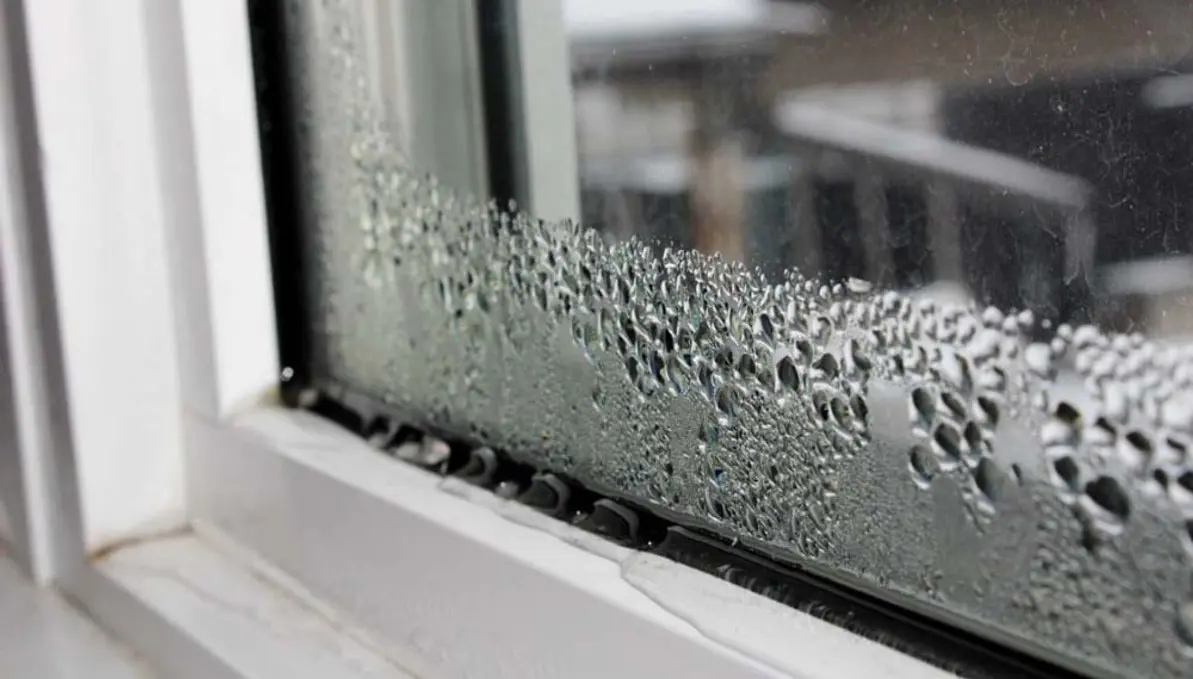Have you ever woken up to a foggy bedroom, with beads of water droplets clinging to your windows? That, my friends, is the dreaded phenomenon of condensation on windows in bedroom.
It’s not only unsightly but can also lead to mould growth in a bedroom, musty odours, and even structural damage if left unchecked.
In this guide, we’ll explore effective ways to stop condensation on windows in a bedroom and restore a cosy, comfortable sleeping environment.
What is Condensation on Windows in a Bedroom?
Before we dive into solutions, let’s first understand what causes this pesky problem. Condensation occurs when warm, moisture-laden air comes into contact with a cooler surface, like your bedroom windows.
The air can no longer hold the moisture, and it condenses into water droplets on the glass.
This is a common issue in bedrooms because they tend to be warm and humid environments, especially during sleep when we exhale moisture into the air.
According to a study by the National Renewable Energy Laboratory, a typical household of four can generate up to 18 litres of moisture per day through activities like breathing, cooking, and showering.
The Impact of Condensation on Windows in Bedroom
While condensation on windows in bedroom might seem like a minor nuisance, it can have far-reaching consequences if left unaddressed. Firstly, it can lead to the growth of mould and mildew, which can trigger respiratory problems, allergies, and other health issues.
In fact, the Centres for Disease Control and Prevention (CDC) estimates that indoor mould exposure is responsible for a significant portion of respiratory illnesses.
Secondly, excessive moisture can damage your window frames, causing wood to rot and metal to rust, compromising the structural integrity of your home.
Additionally, condensation can lead to unsightly water stains on walls and furniture, making your cosy bedroom look anything but inviting.
Simple Solutions to Stop Condensation on Windows in Bedroom
Now that we understand the problem and its potential impact, let’s explore some simple solutions to stop condensation on windows in bedroom.
- Improve Ventilation: Proper ventilation is key to reducing moisture levels in your bedroom. Open windows (when weather permits) or use an exhaust fan to circulate air and remove excess humidity. According to the Environmental Protection Agency (EPA), indoor humidity levels should ideally be kept between 30% and 50%.
- Use a Dehumidifier: A dehumidifier is a powerful tool in the fight against condensation on windows in bedroom. These devices actively remove moisture from the air, making it harder for condensation to form on cool surfaces. When choosing a dehumidifier, consider the size of your bedroom and the unit’s capacity to ensure optimal performance.
- Insulate Windows: Poorly insulated windows can contribute to condensation by creating cold spots on the glass. Applying window insulation film or replacing old, draft windows with energy-efficient models can help maintain a consistent temperature and prevent condensation.
Recommended: What Is Better For Bedroom: Turntable Stand Or Pine Bedroom Furniture?
Advanced Strategies to Fight Persistent Condensation on Windows in Bedroom
If simple solutions aren’t cutting it, don’t worry – we’ve got some advanced strategies up our sleeves.
- Install a Whole-House Dehumidifier: For homes with persistent moisture issues, a whole-house dehumidifier might be the answer. These systems are integrated into your HVAC system and work to remove excess moisture from the air throughout your entire home, ensuring a comfortable and condensation-free living environment.
- Upgrade to Double or Triple-Paned Windows: While more expensive, upgrading to double or triple-paned windows can significantly reduce condensation on windows in bedroom. These windows feature multiple layers of glass with an insulating gas or vacuum in between, effectively minimizing temperature differences that lead to condensation.
- Invest in a Heat Recovery Ventilator (HRV): An HRV is a specialized ventilation system that exchanges stale indoor air with fresh outdoor air while recovering heat from the outgoing air. This helps maintain a comfortable temperature and humidity level, reducing the risk of condensation on windows in bedroom.
Tips for a Condensation-Free Bedroom
In addition to the solutions mentioned above, here are some extra tips to help create a cosy, condensation-free bedroom:
- Proper Insulation: Ensure your bedroom walls, attic, and floors are well-insulated to prevent temperature fluctuations that can contribute to condensation.
- Manage Indoor Plants: While indoor plants can add a touch of nature to your bedroom, they also release moisture into the air. Consider limiting the number of plants or relocating them to other rooms to reduce humidity levels.
- Adjust Your Sleep Routine: Believe it or not, your sleep routine can impact condensation on windows in bedroom. Try to keep your bedroom cooler at night and avoid activities that generate excess moisture, like taking steamy showers or drying clothes in the room.
- Clean Regularly: Regular cleaning can help prevent the build-up of dust in bedroom and other particles that can contribute to moisture build-up and condensation on windows in bedroom. Use a damp cloth or microfiber mop to wipe down surfaces and remove any moisture or grime.
Final Thoughts
Condensation on windows in bedroom is more than just an unsightly nuisance – it can lead to mould growth, structural damage, and an overall uncomfortable living environment.
By implementing the solutions we’ve discussed, such as improving ventilation, using dehumidifiers, insulating windows, and investing in advanced systems like whole-house dehumidifiers and HRVs, you can effectively stop condensation on windows in bedroom and enjoy a cosy, comfortable sleeping space.
Remember, prevention is key. By managing indoor humidity levels, ensuring proper insulation, and adopting a condensation-conscious sleep routine, you can significantly reduce the risk of this pesky problem from occurring in the first place.
So, say goodbye to foggy windows and hello to a bedroom that’s a true oasis of relaxation and comfort.




